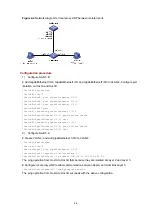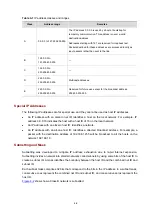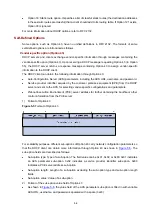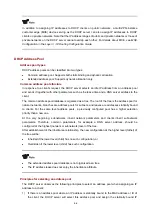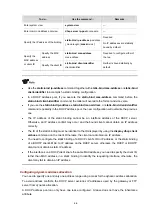
5-2
z
Dynamic allocation: DHCP assigns an IP address to a client for a limited period of time, which is
called a lease. Most DHCP clients obtain their addresses in this way.
Dynamic IP Address Allocation Process
Figure 5-2
Dynamic IP address allocation process
As shown in
, a DHCP client obtains an IP address from a DHCP server via four steps:
1) The client broadcasts a DHCP-DISCOVER message to locate a DHCP server.
2) A DHCP server offers configuration parameters including an IP address to the client in a
DHCP-OFFER message. The sending mode of the DHCP-OFFER message is determined by the
flag field in the DHCP-DISCOVER message. Refer to
for related
information.
3) If several DHCP servers send offers to the client, the client accepts the first received offer, and
broadcasts it in a DHCP-REQUEST message to formally request the IP address.
4) All DHCP servers receive the DHCP-REQUEST message, but only the server from which the
client accepts the offered IP address responds. The server returns a DHCP-ACK message to the
client, confirming that the IP address has been allocated to the client, or a DHCP-NAK unicast
message, denying the IP address allocation.
z
After receiving the DHCP-ACK message, the client probes whether the IP address assigned by
the server is in use by broadcasting a gratuitous ARP packet. If the client receives no response
within a specified time, the client can use this IP address. Otherwise, the client sends a
DHCP-DECLINE message to the server and requests an IP address again.
z
The IP addresses offered by other DHCP servers are still assignable to other clients.



